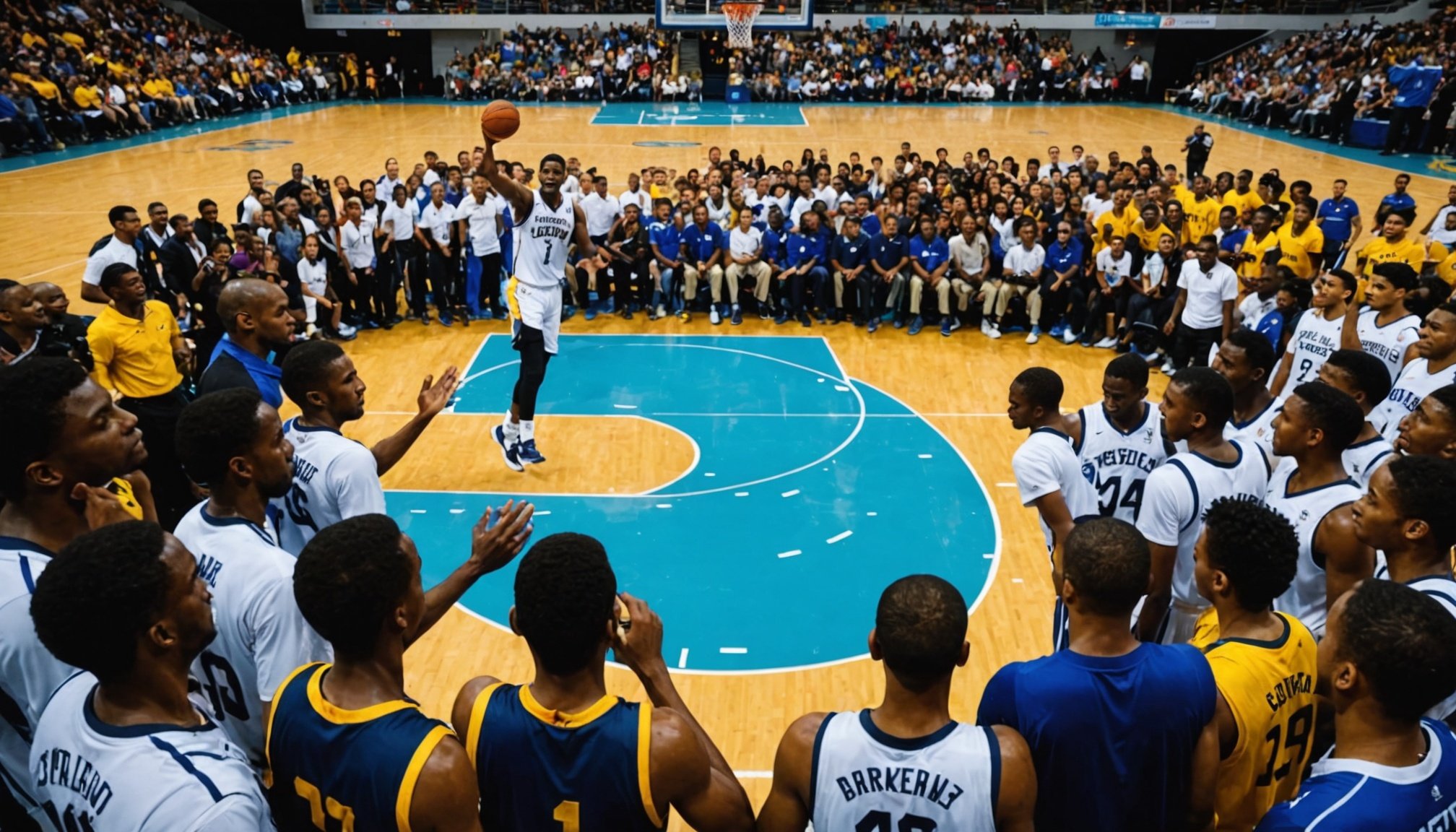Basketball is more than just a game; it is a vibrant culture that transcends borders and unites people across the globe. From the streets of New York to the neighborhoods of Manila, the way basketball is played and perceived varies dramatically depending on local customs, values, and sports traditions. In this article, we will explore how the development of basketball has led to distinct regional identities, the influence of international leagues like the NBA, and the unique characteristics that define the basketball culture in different countries. Get ready to dive into the fascinating world of basketball as we uncover its global tapestry.
The Origins of Basketball Culture
To understand the differences in basketball cultures worldwide, we must first look at its origin. Basketball was invented in the United States in the late 19th century. It began as a simple game to keep students active indoors during winter months. As it gained popularity, basketball evolved into a serious sport played at schools and colleges. The establishment of the NBA in 1946 marked a significant turning point, as it attracted talented players and increased the sport’s visibility.
Have you seen this : Unlocking victory: smart tactics for uk basketball players to analyze and outsmart opponents’ strategies
In the American context, basketball became synonymous with urban culture, particularly in cities like Chicago, Los Angeles, and New York. Many basketball teams emerged, each reflecting the local identity and spirit of their communities. The game is often associated with hip-hop culture, characterized by its rhythm, style, and attitude. Streetball, a variation of basketball played informally on courts, has further embedded basketball in urban culture.
Conversely, the way basketball developed in other countries often reflects distinct cultural influences. For example, in countries like Spain and Argentina, basketball is influenced by soccer, which is the predominant sport. This influence manifests in the way teams are organized and the strategies employed during gameplay. Moreover, the passion for basketball in these regions is often coupled with a deep-seated love for their home country’s traditions and sports. Therefore, while basketball may have American roots, its branches now reach far and wide, adapting to the unique cultural landscapes of various nations.
In the same genre : How does playing in different positions affect a player’s development in basketball?
International Impact of the NBA
The NBA has played a pivotal role in shaping the global landscape of basketball. With its high production quality, star players, and thrilling matches, the league has captivated millions worldwide. The NBA not only showcases American talent but also serves as a platform for international stars to shine. Players from countries like Lithuania, Australia, and Nigeria have made significant impacts in the league, demonstrating the global reach of basketball.
When the NBA expanded its reach to international audiences, it fueled interest and participation in basketball across the globe. Countries like China have seen a meteoric rise in basketball’s popularity, largely due to the NBA’s marketing strategies and partnerships. The introduction of the NBA Global Games, where teams travel abroad to play exhibition matches, has further solidified basketball as a global sport. These events not only promote the game but also give fans a chance to witness their favorite players live, enriching their connection to the league.
However, the impact of the NBA goes beyond just fandom; it fosters local development programs and youth academies. Countries invest in grassroots initiatives to nurture young talent, often inspired by the NBA’s success stories. Consequently, these programs lead to an increase in the number of teams and organized leagues, improving the overall standard of play. As a result, nations that once lacked a strong basketball presence are now producing players who can compete at the highest levels, reflecting a promising future for the sport.
Regional Variations in Playing Styles
As basketball spreads across countries, distinct playing styles emerge, influenced by local culture and traditions. In the United States, the game is often characterized by its fast pace and athleticism. The emphasis is on individual talent, with players showcasing their skills through high-scoring, dynamic plays. This style has contributed significantly to the NBA‘s reputation as the pinnacle of basketball excellence.
In contrast, European countries tend to favor a more team-oriented approach. Basketball is often played with a focus on strategic passing and spacing, emphasizing a collective effort over individual brilliance. This style is evident in leagues such as Liga ACB in Spain and EuroLeague, where the game is played at a high technical level. The incorporation of advanced analytics has further refined these strategies, leading to a more cerebral form of basketball.
Additionally, in countries like the Philippines, basketball is an integral part of daily life. The sport is played in makeshift courts, often with a strong emphasis on community participation. This grassroots culture has fostered a unique playing style that values creativity and improvisation. Players often develop skills suited for their environment, making the game accessible and enjoyable for everyone.
These regional variations highlight how basketball can adapt to meet the desires and needs of different communities. Whether through the flashy plays of the NBA, the teamwork observed in European leagues, or the community spirit found in the Philippines, each culture contributes to a rich and diverse basketball landscape.
Basketball as a Reflection of National Identity
Basketball often mirrors the national identity of the countries where it is played. In America, basketball reflects the values of hard work, perseverance, and the pursuit of excellence. The success of the NBA has made basketball a symbol of American culture, showcasing the dreams of many players who aspire to succeed in professional sports.
In contrast, in countries like Australia, basketball is seen as a team sport that promotes inclusivity and mateship. The rise of Australian players in the NBA has also bolstered national pride, leading to increased participation at various levels. The emergence of the National Basketball League (NBL) has further strengthened basketball’s position within Australian culture, positioning it as a leading sport alongside cricket and rugby.
Similarly, in countries like Lithuania, basketball is almost a religion. The nation takes great pride in its players and teams, often achieving remarkable success on the international stage despite its small size. The sport is deeply entrenched in Lithuanian culture, with significant investments made in youth programs and community leagues, fostering a strong sense of national identity through basketball.
These examples illustrate how basketball serves as a microcosm of national pride and identity. While the game might have originated in America, it has evolved to reflect the unique cultural values of each nation, making it a powerful unifying force among people worldwide.
In conclusion, basketball transcends geographical boundaries, becoming a vital part of numerous cultures around the world. The influence of the NBA, the emergence of distinct regional playing styles, and the sport’s reflection of national identity collectively shape how basketball is perceived and played globally. Each country adds its flavor to the game, creating a rich tapestry of shared passion and camaraderie among fans and players alike. As basketball continues to grow and develop internationally, it will undoubtedly evolve, reflecting the ever-changing landscape of global sports culture. The beautiful game of basketball is not just about the competition; it is about community, identity, and a shared love for a sport that inspires millions.











